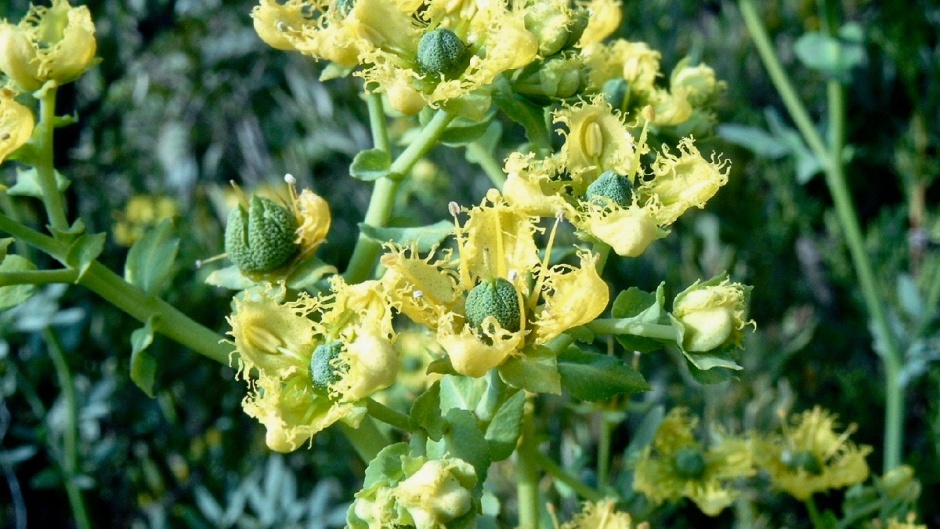The Jews of biblical times used it as a condiment for their meals, and also as an antiseptic and disinfectant. It is a bush which can reach a height of 60 to 90 cm.
 Photo: Antonio Cruz.
Photo: Antonio Cruz.
Woe to you Pharisees, because you give God a tenth of your mint, rue and all other kinds of garden herbs, but you neglect justice and the love of God. You should have practiced the latter without leaving the former undone. (Luke 11:42)
The Greek word peganon means “rue” and only occurs once in the New Testament. It refers to the plant Ruta chalepensis, a member of the Rutaceae family, which is common in Israel.
Despite it not being included specifically in the plants that were to be tithed, strict Pharisees added it to the list. However, this opinion did not prevail for very long, and the Talmud clearly excludes it.
The name “rue” (in Latin ruta) comes from the greenish-blue, perennial, broad and fleshy leaves. The Jews of biblical times used it as a condiment for their meals, and also as an antiseptic and disinfectant. It is a bush which can reach a height of 60 to 90 cm and grows throughout the Mediterranean basin, and from the Atlantic islands of Cape Verde, the Canaries, the Azores, Madeira in the west to the Arabian peninsula in the east.
It is quite a leafy plant with small yellow flowers which have eight stamens and, in most cases, four petals terminating in numerous filaments. In the centre of these petals there is a green button containing the female pistil. The plant usually gives off a rather unpleasant smell, which some people even find repugnant.
Traditionally rue has been used for medicinal purposes, to combat flu, colds, arthritis and loss of appetite, although it also irritates the skin and prolonged contact can cause dermatitis. The positive property of its main component, the rutina, is that it enhances the resistance of the blood capillaries, as a result of which it contributes to preventing them from breaking. It has therefore been used to provoke or increase menstruation in women with problems of insufficiency, although the dose administered must always be very small, as the plant is poisonous. Pregnant women must not use it as it acts upon the muscular fibres of the uterus, contracting the pelvis, with the risk of causing a miscarriage.
The verse quoted above (Luke 11:42) records the Pharisees’ custom of tithing even the small plants grown in domestic gardens. This was not prescribed by the mosaic law. They were nit-picking, human requirements that reflected exaggerated concerns over small, insignificant details, to the neglect of what really was of overriding importance, such as love and justice.
The Lord Jesus vehemently condemned this kind of religious hypocrisy. This teaching of the Master remains very relevant today, as it holds true for every period of human history. Our obsession with finer details must not be allowed to blind us to what is of fundamental importance in our relationship with God and with our neighbour. Love, justice and solidarity must take priority in the Christian’s life and must never be substituted with the tithing of “mint and rue”.

Las opiniones vertidas por nuestros colaboradores se realizan a nivel personal, pudiendo coincidir o no con la postura de la dirección de Protestante Digital.
Si quieres comentar o